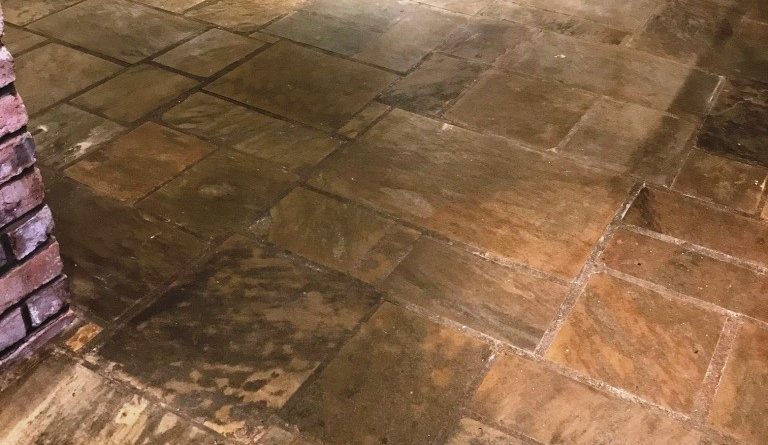Grinding Textured Indian Sandstone Tiles Smooth in Barnoldswick, Lancashire
The pictures below show a Rough Textured Indian Sandstone floor installed in the Kitchen and Hallway at a property in Bernoldswick which is a small town just outside the Yorkshire Dales national park. The client called us out to have a look at their floor which was very dirty. They were undecided as to what to do with it and were even considering ripping it up and putting a more practical floor down. This Sandstone has a rough texture which traps dirt and can shred mops making it very difficult to maintain so it’s not surprising that the client was close to giving up on it.
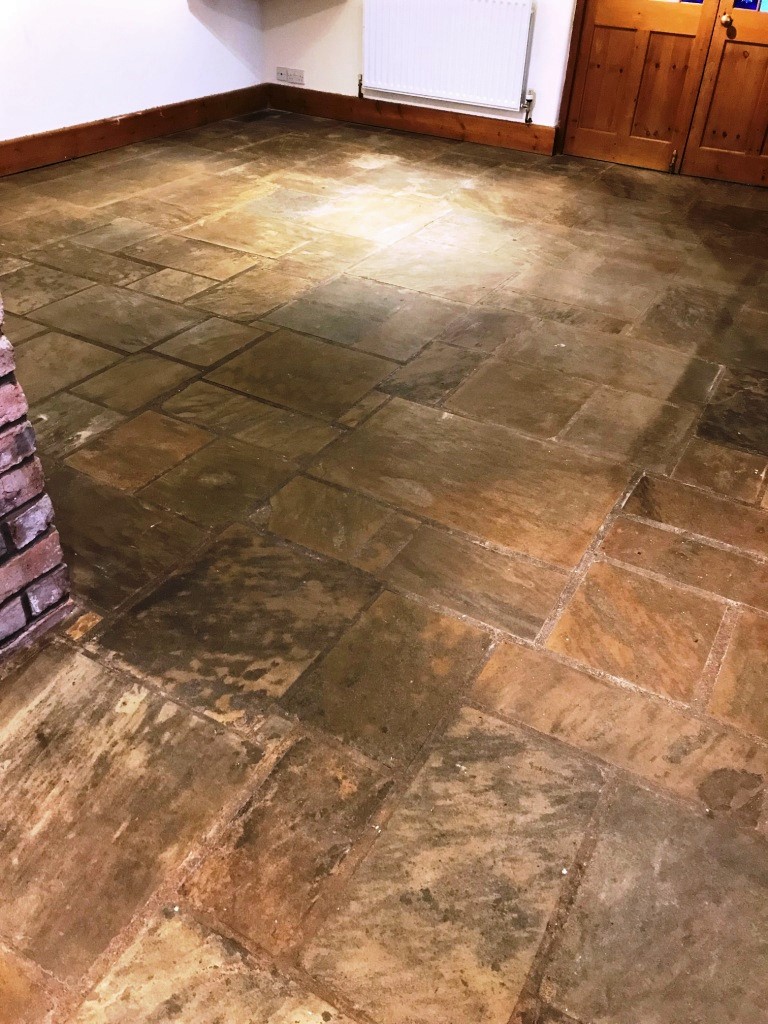
Initially we were asked just to deep clean and seal the Stone, but I realised that wouldn’t resolve the problem completely, so I offered a service we call Milling. This is a process involves applying coarse diamond pads with special machinery to remove a good chunk of the rough texture (about 80 to 85% ). It would leave the stone with a much smoother finish which is easier to keep clean, easier to seal and a lot easier to maintain in the future.
 |
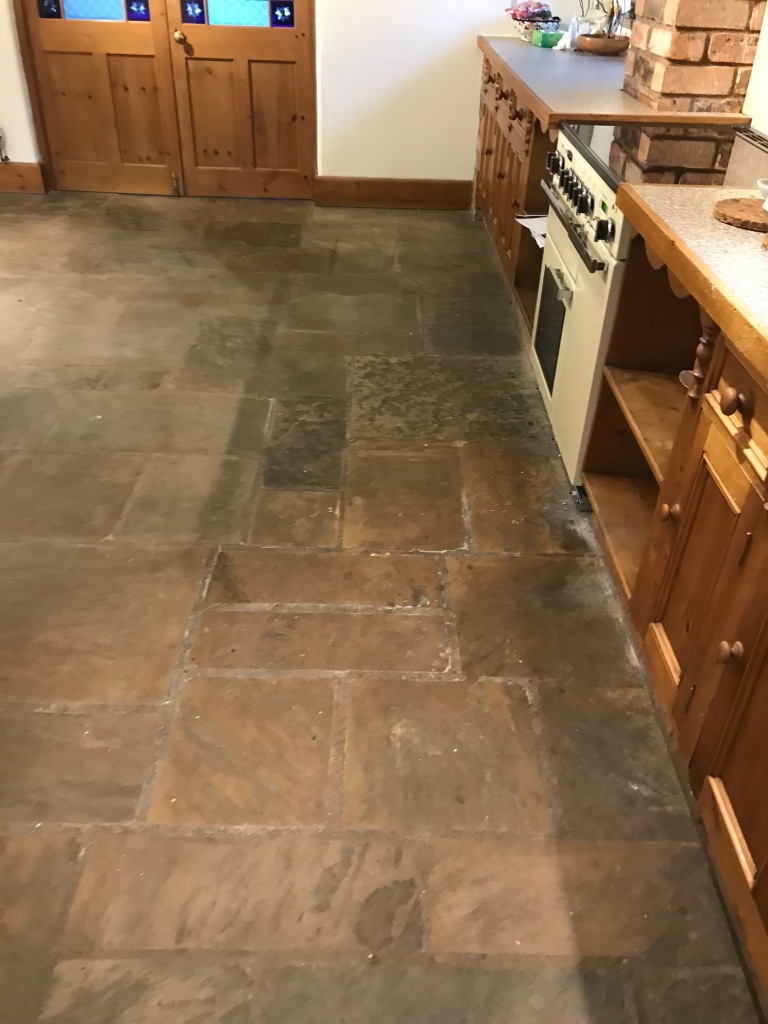 |
After a demonstration was done and a price given for either a clean and seal or to Mill first followed by a clean and seal the customer opted for the latter. This would also prove significantly cheaper than ripping up the floor, hiring a skip to take away the stone, then self-levelling the concrete to get it ready for the new floor, not to mention the cost of the new floor covering.
Cleaning and Milling an Indian Sandstone Tiled Kitchen and Hallway Floor
Milling the stone involves the use of a set of thee milling pads of different grades (50, 100 and 200 grit) which are applied in sequence. You start with the coarse and abrasive 50 grit milling pad and follow this by smoothing this surface with the finer 100 and 200 diamond grit milling pads. Water is used to lubricate and capture the dust which is created during the process resulting in a slurry which needs to be rinsed away and extracted with a wet vacuum between each pad. The process requires the use of a solid weighted rotary machine and a fair bit of muscle power to guide it.
As you can see from the pictures the difference is immense but what you can’t tell from these photos is how smooth the stone feels to the touch as its the rough texture of Sandstone that catches all the dirt and makes it hard to clean, even after it has been cleaned and sealed professionally.
To refine the surface of the Sandstone even further the Milling process is followed by the application of finer grade Burnishing pads, again applied with water and the soil rinsed off between each pad. This process uses no chemical cleaning products only water, Diamond pads and machinery.
Sealing an Indian Sandstone Tiled Kitchen and Hallway Floor
After allowing the stone to fully dry out overnight we finished the job with several coats of Tile Doctor Colour Grow which is a colour enhancing impregnating sealer that protects the stone from within. It gave the stone a nice low-key matt colour enhanced finish that really showed off the character in the stone.
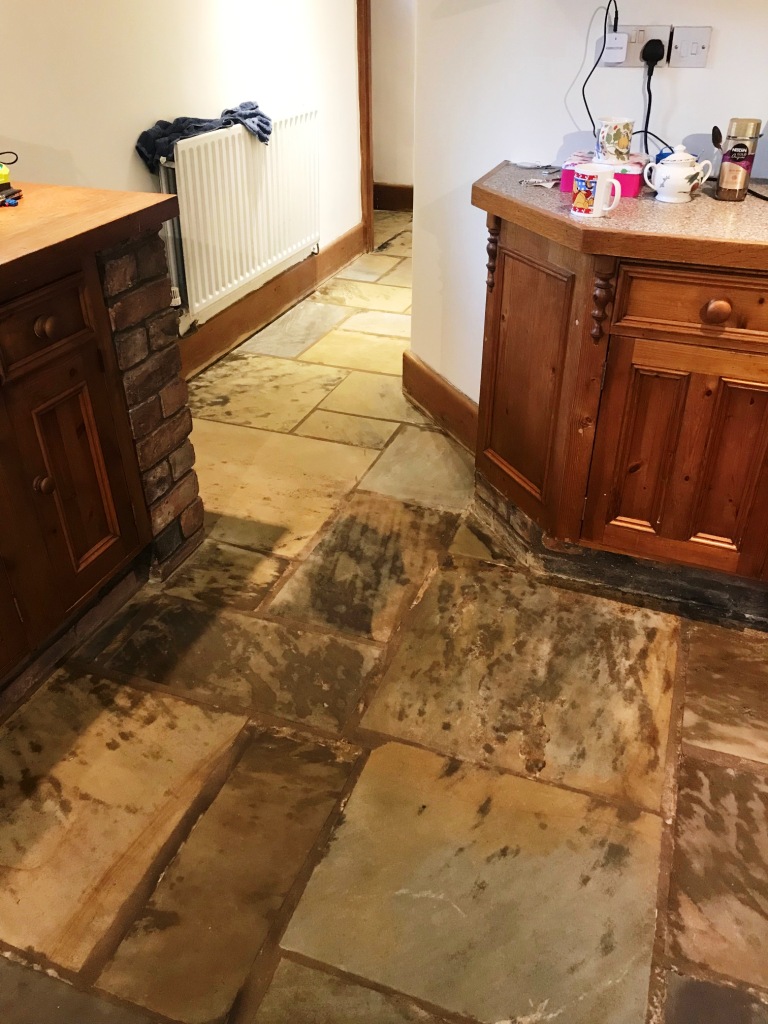 |
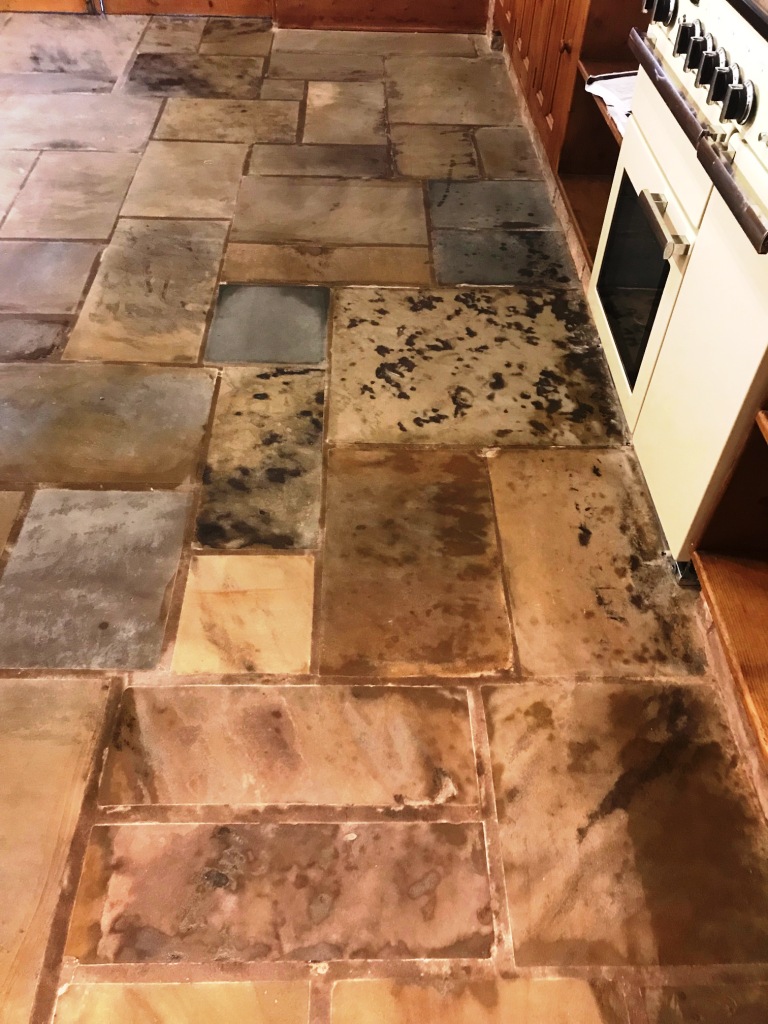 |
The client was over the moon with the result and were so pleased they had not ripped up the floor!

Source: Indian Sandstone Tile Cleaning and Restoration Service in Barnoldswick, Lancashire
